Wellness takes to the skies and the high seas in this concept superyacht and private jet retrofit
High-end mobility design pivots to minimalist calm and life-affirming ambience as wellness trends take hold. The Sea Rover yacht and Afterglow private jet point the way

The long arm of the spa has already reached into our homes and re-shaped our daily routines, in addition to making wellness a focal point of bathroom and wet room design. These two concepts, from Dutch Design and JPA Design respectively, showcase ways in which the art of the experience has filtered through to transport design.

The Sea Rover yacht by Dutch Design
First up is Dutch Design’s new yacht concept, The Sea Rover. The studio, founded by Scott Blum and naval designer Bernd Weel, makes its debut with this project, which splices together ‘decades of personal yachting experience and a passion for mindfulness’ to create the ‘world’s only wellness-first yacht.’
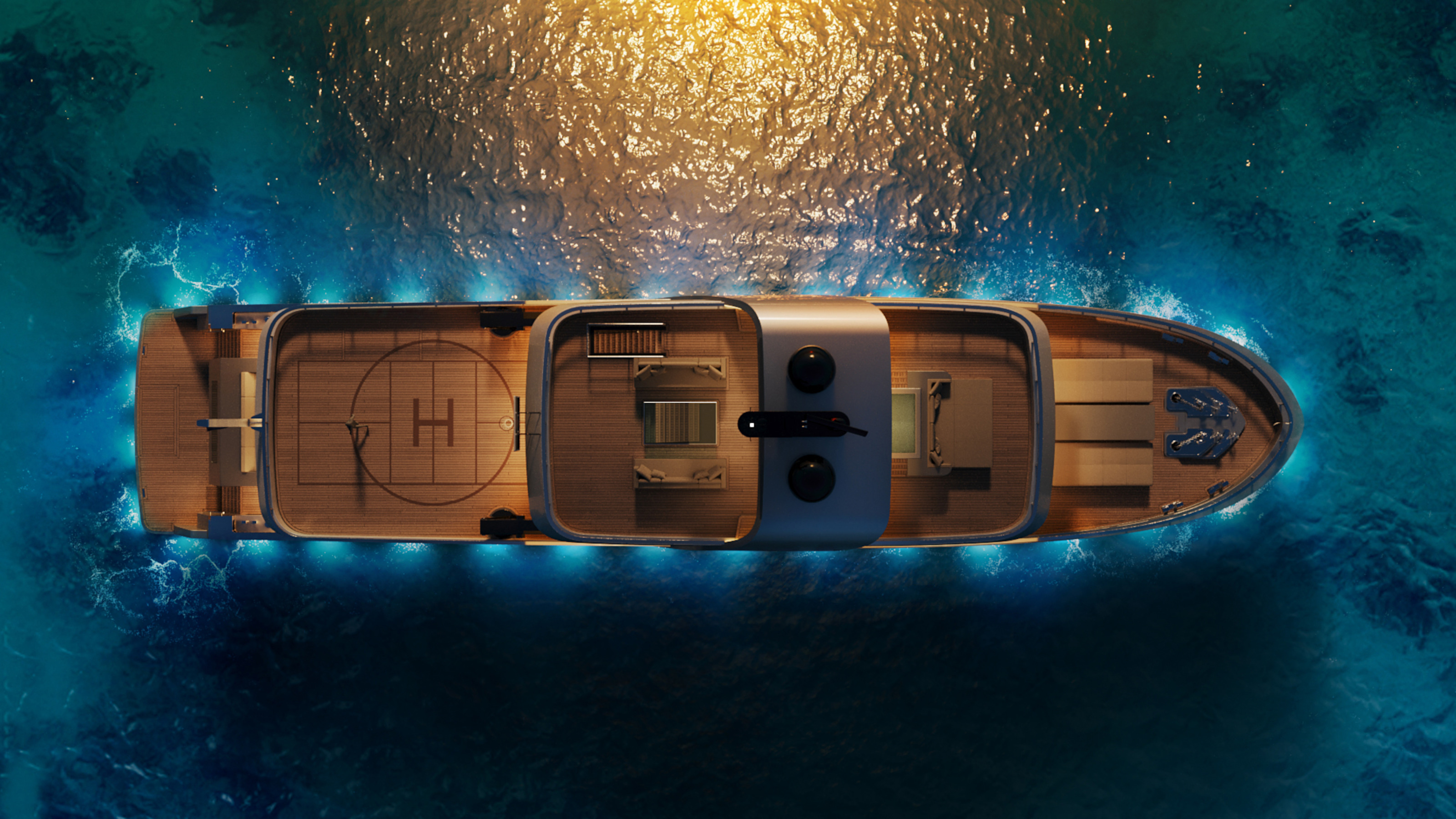
The Sea Rover yacht by Dutch Design
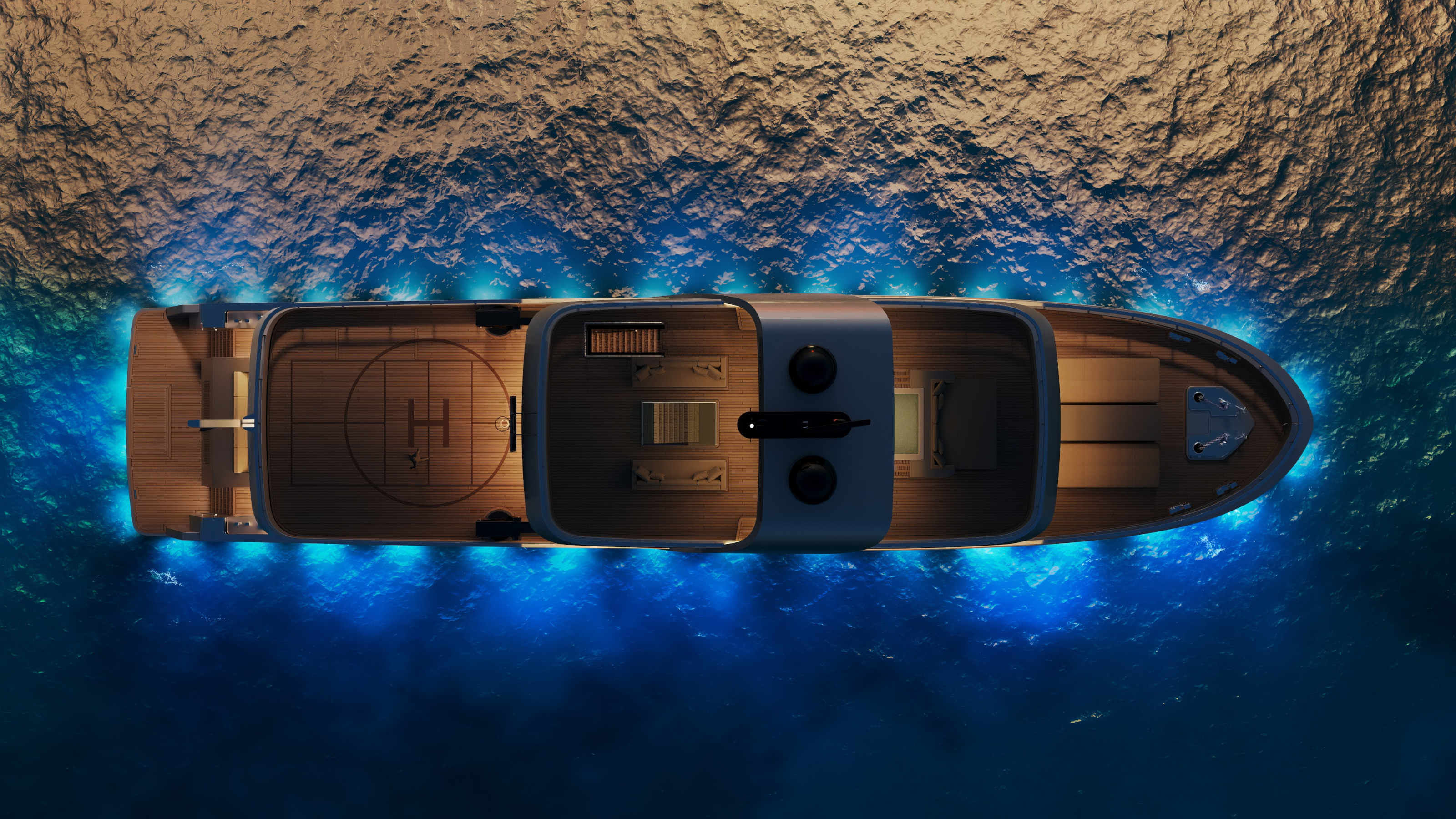
The Sea Rover yacht by Dutch Design
Most high-end yachts aren’t exactly lacking in amenities, from infinity pools to onboard spas and treatment rooms. Where Dutch Design are different is their emphasis on tranquillity and refinement, as opposed to all-out immersion in luxury. That’s not to say the Sea Rover is small. At 42.5 metres (140-foot), it easily qualifies for the ‘superyacht’ label, but the designers are hoping to compress the ‘grandeur of a 300-foot mega yacht in a far more compact size.’
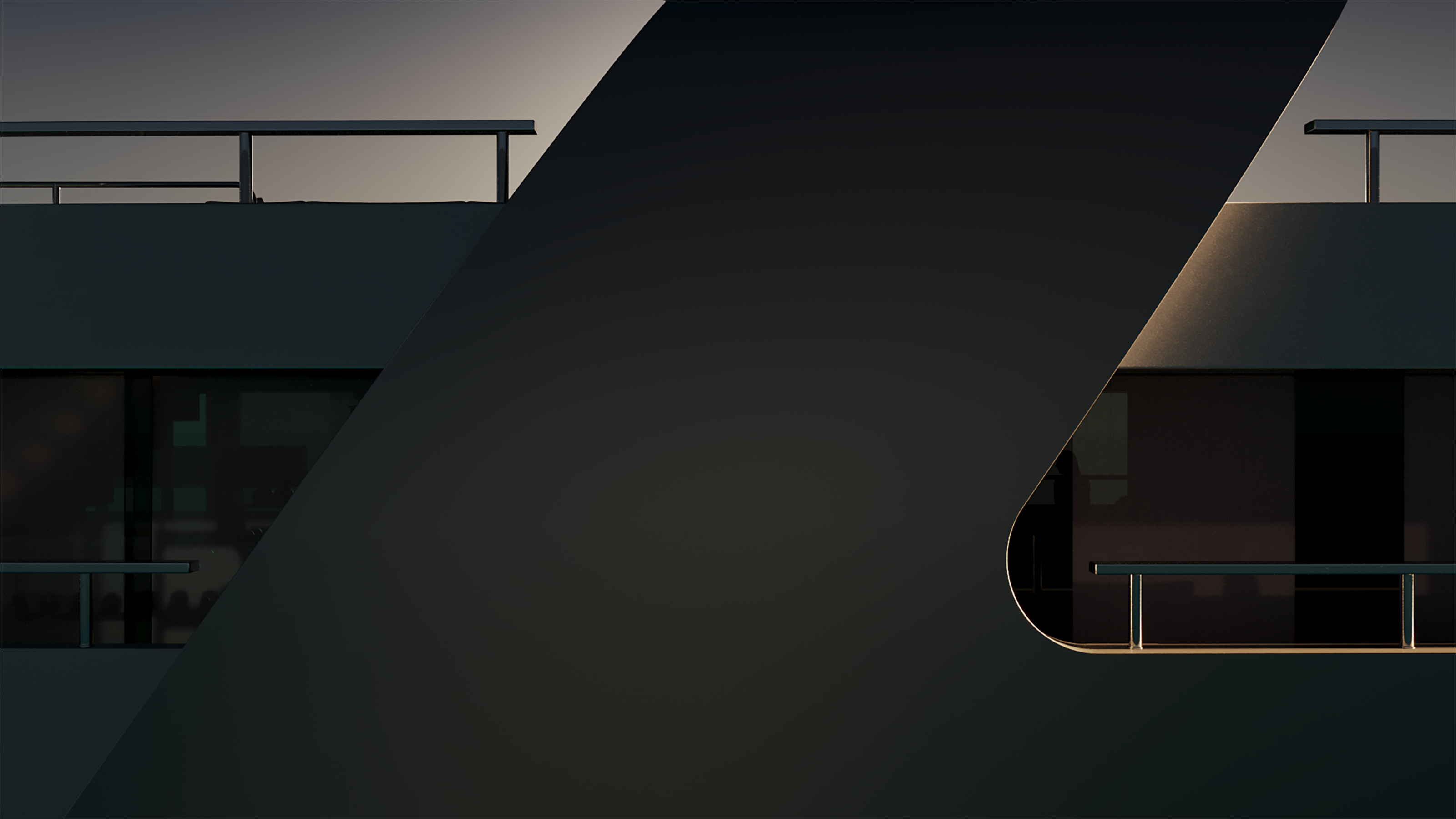
The Sea Rover yacht has ultra-minimal lines
All this is expressed through a commitment to minimalist lines and maximal craft and material quality. Dutch Design evoke Californian modernism as a starting point, with the aim of creating a yacht that’s effectively a wellness retreat at sea. In addition to a spa, there’s also a fully equipped gym up on the bridge deck, not tucked away in the bowels of the ship.
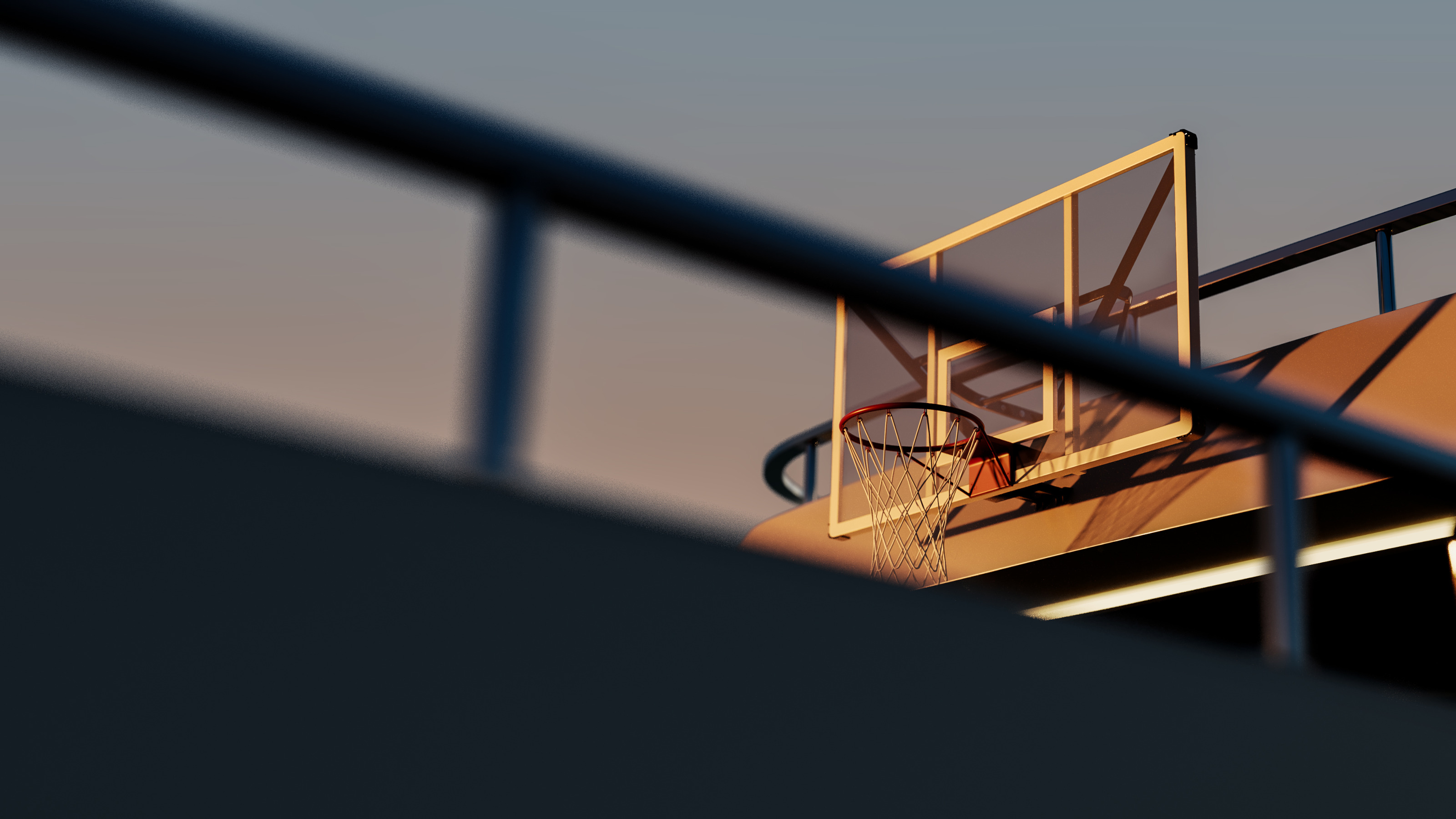
Space for sporting activities has been included
Alongside the gym there’s an adaptable sport court, with enough space for pickleball and basketball. The beach club in the stern has unfolding areas that create a large swimming platform, and there’s also a wet bar and dining space alongside the standard sunbeds.
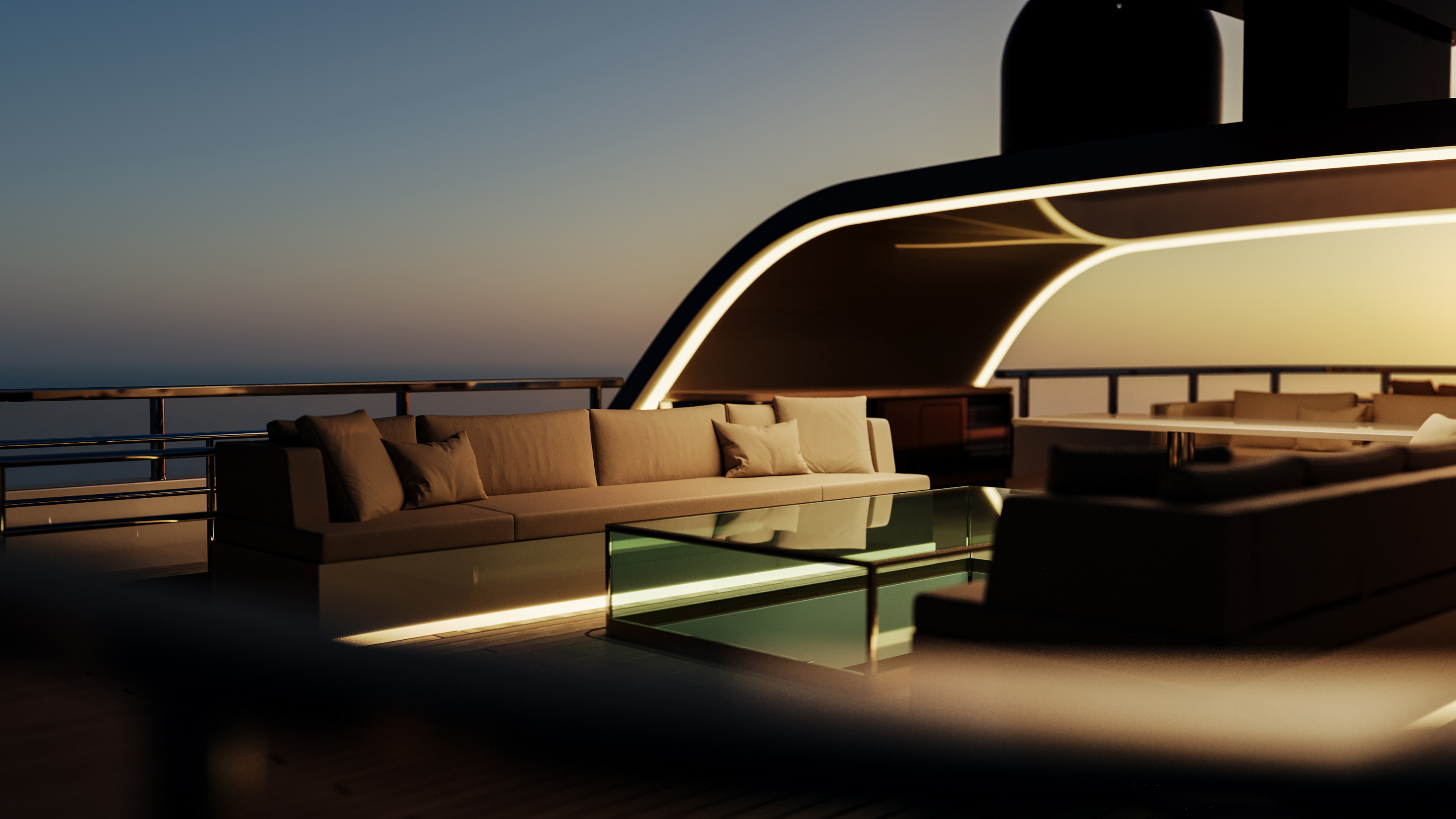
Furnishings mimic the pared back aesthetic of the yacht's superstructure
Other aspects of the Sea Rover are notable for their sense of transparency, as opposed to the rigidly hierarchical nature of a traditional superyacht, with its service areas hidden from view. The dining room and entertaining space is open to the kitchen, replicating a fine dining experience and even the engine room is revealed via a glass hallway alongside it that transforms a quotidian passage into a journey through the heart of the ship.
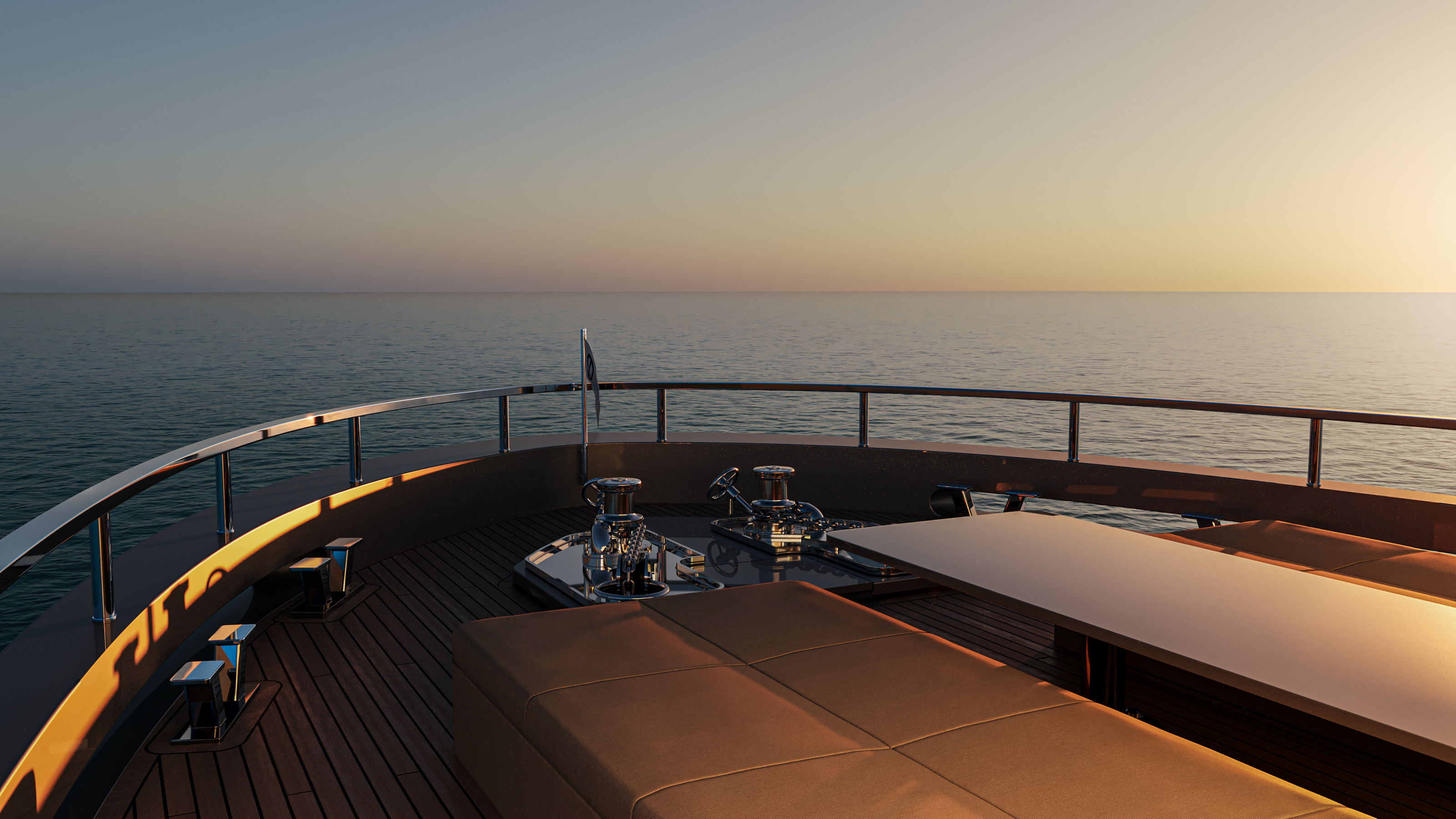
The Sea Rover is intended as a floating wellness retreat
Naturally, there is opulent accommodation. The owner’s cabin is set forward of the main deck and includes a Japanese onsen-style tub and steam room in its separate bathing area. The yacht includes four additional guest cabins, while a dramatic central staircase – the Sky View Stairwell – serves as the heart of the ship and brings light down into the lower decks.
Wallpaper* Newsletter
Receive our daily digest of inspiration, escapism and design stories from around the world direct to your inbox.
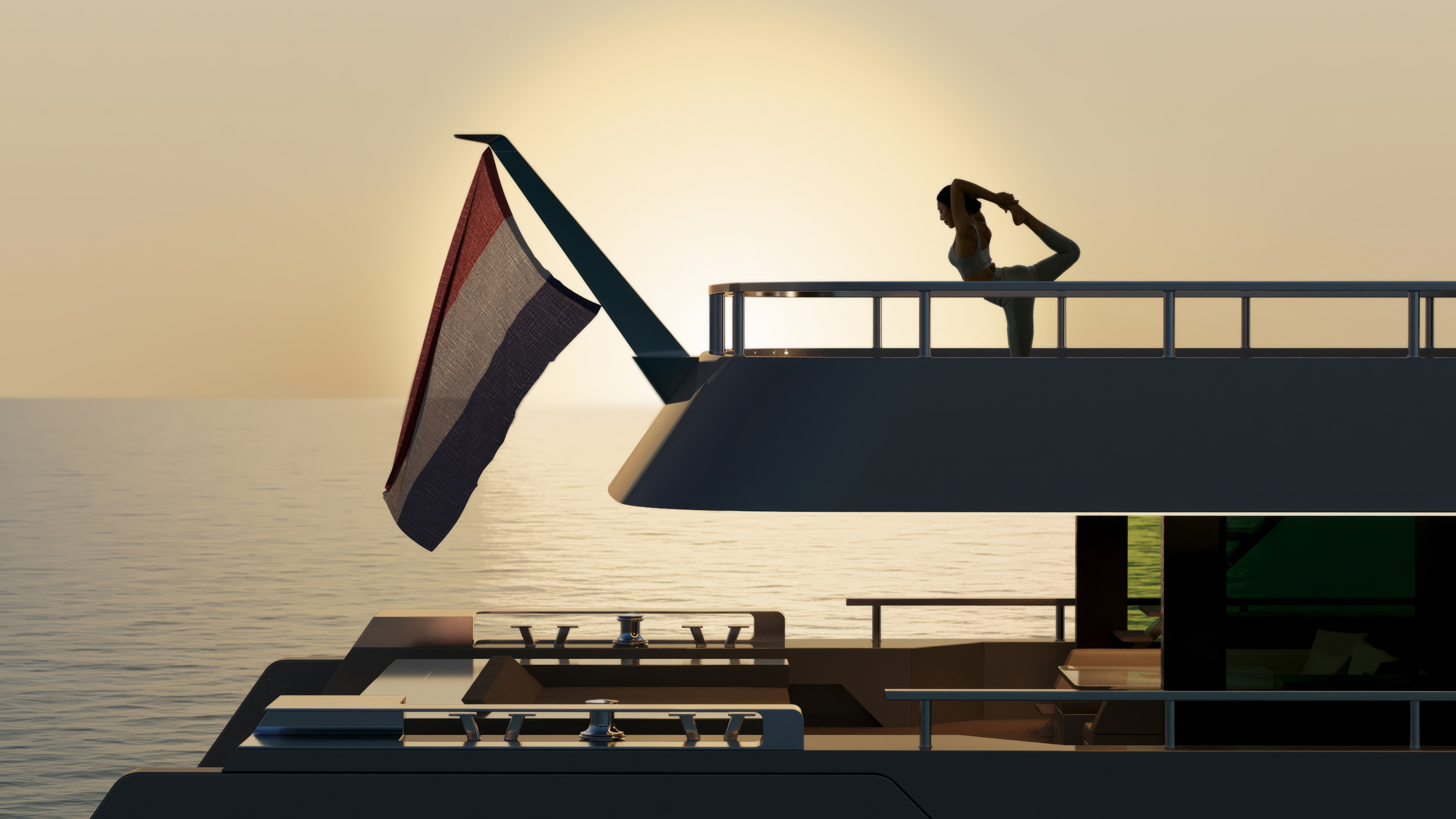
The Sea Rover yacht by Dutch Design
Dutch Design hopes to build ten examples of the Sea Rover, with these indicative renders demonstrating the core approach. As with every ultra-bespoke project, however, personal requirements will usually override the purity of the original design vision.
Wellness in the air with the Afterglow jet concept
JPA Design’s Afterglow is a conceptual vision of a private jet fit-out with wellness in mind. The global design agency, which has offices in London, Singapore, Dubai and New Zealand, focuses on lighting design in aircraft interiors, taking the cabin back to first principles in order to synchronise with our natural circadian rhythms.
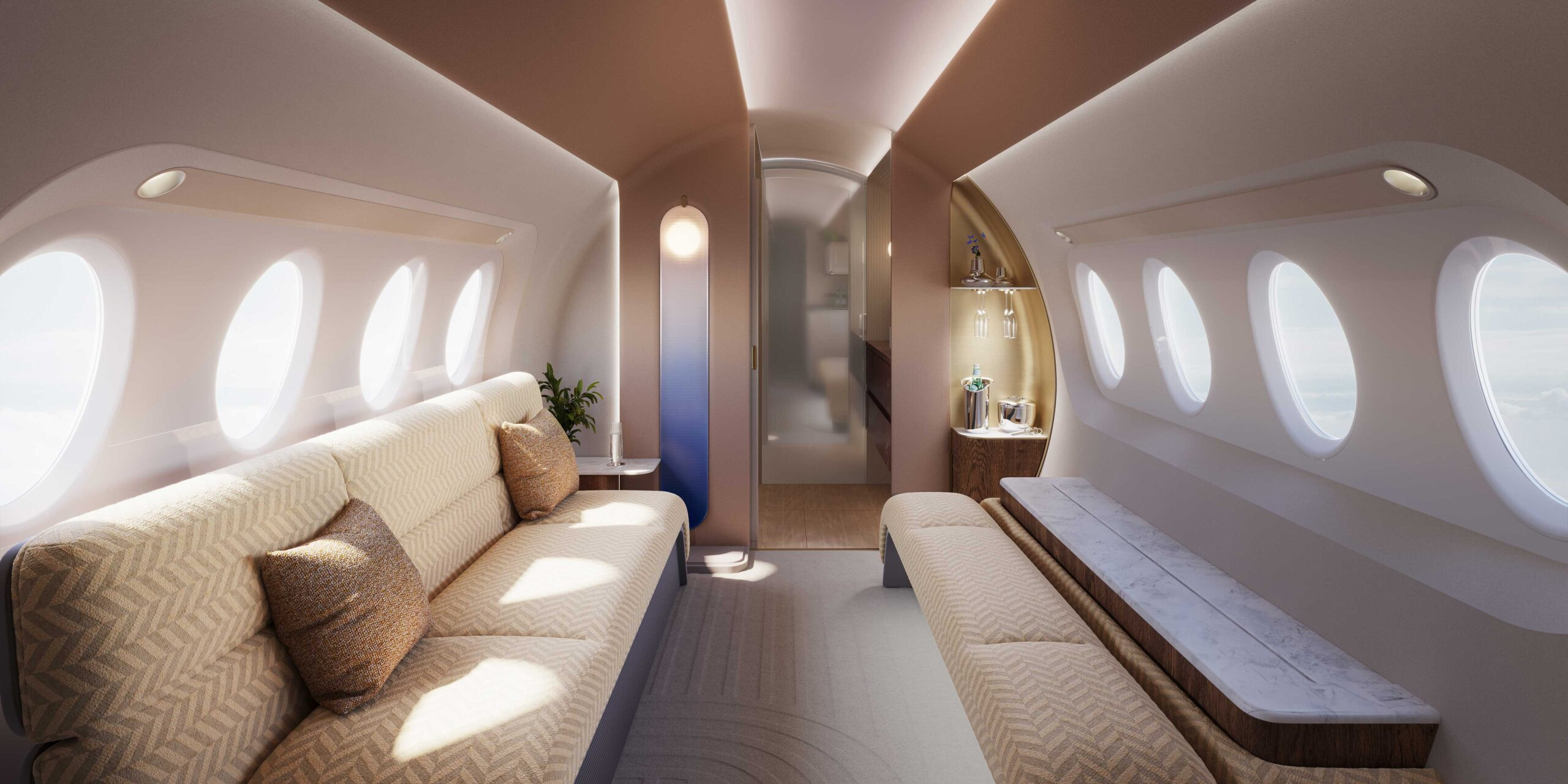
The Afterglow concept by JPA Design
The movement of the sun is tracked by a wall-mounted ‘orb’, part lighting fixture, part art installation, that is synchronised to both the cabin lighting and the position of the sun in the sky. Depending on the route and time, the system is designed to create an optimum lighting cycle for passengers, helping adapt to changes in time zone.
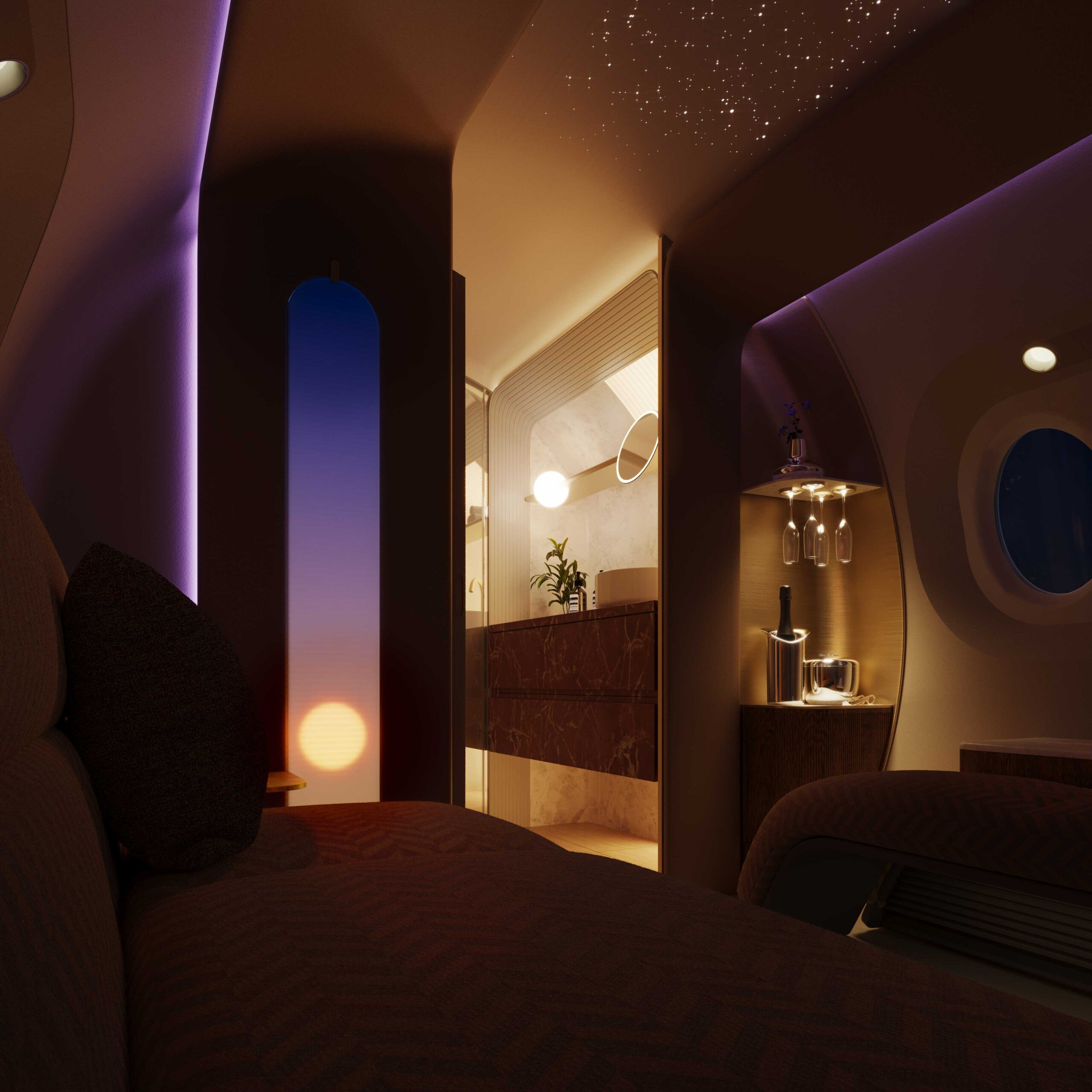
The Afterglow concept features an illuminated orb synchronised with cabin light, flight patterns and human rhythms
This illuminated choreography is at the heart of the Afterglow concept, and the rest of the cabin eschews the traditional leather and lacquer interior approach to make for a more holistic overall experience. According to Elliott Koehler, Creative Director at JPA Design, ‘True luxury today isn't just about aesthetic beauty—it's about creating environments that actively enhance our passengers' well-being. Every design decision, from our lighting system to the intuitive cabin layout, serves both form and function.’
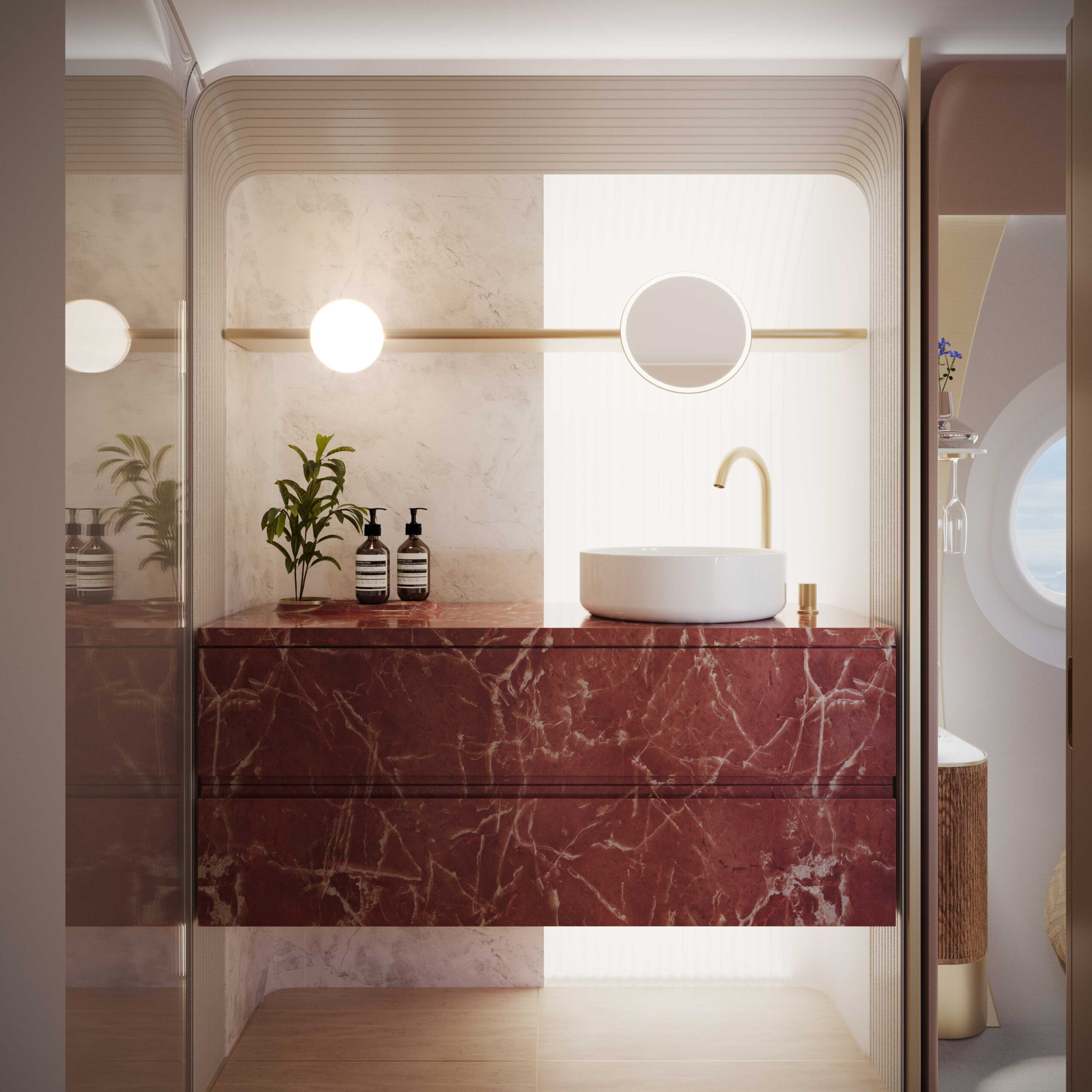
A generous full-size washroom and changing area is located at the rear of the jet
The cabin contains a generous sized washroom and changing area, along with wardrobe and storage space, a custom mini bar and a sofa that converts to a double bed. Patterned textiles and fabrics in a calm, contemporary palette elevate the status and overall ambience of the space.
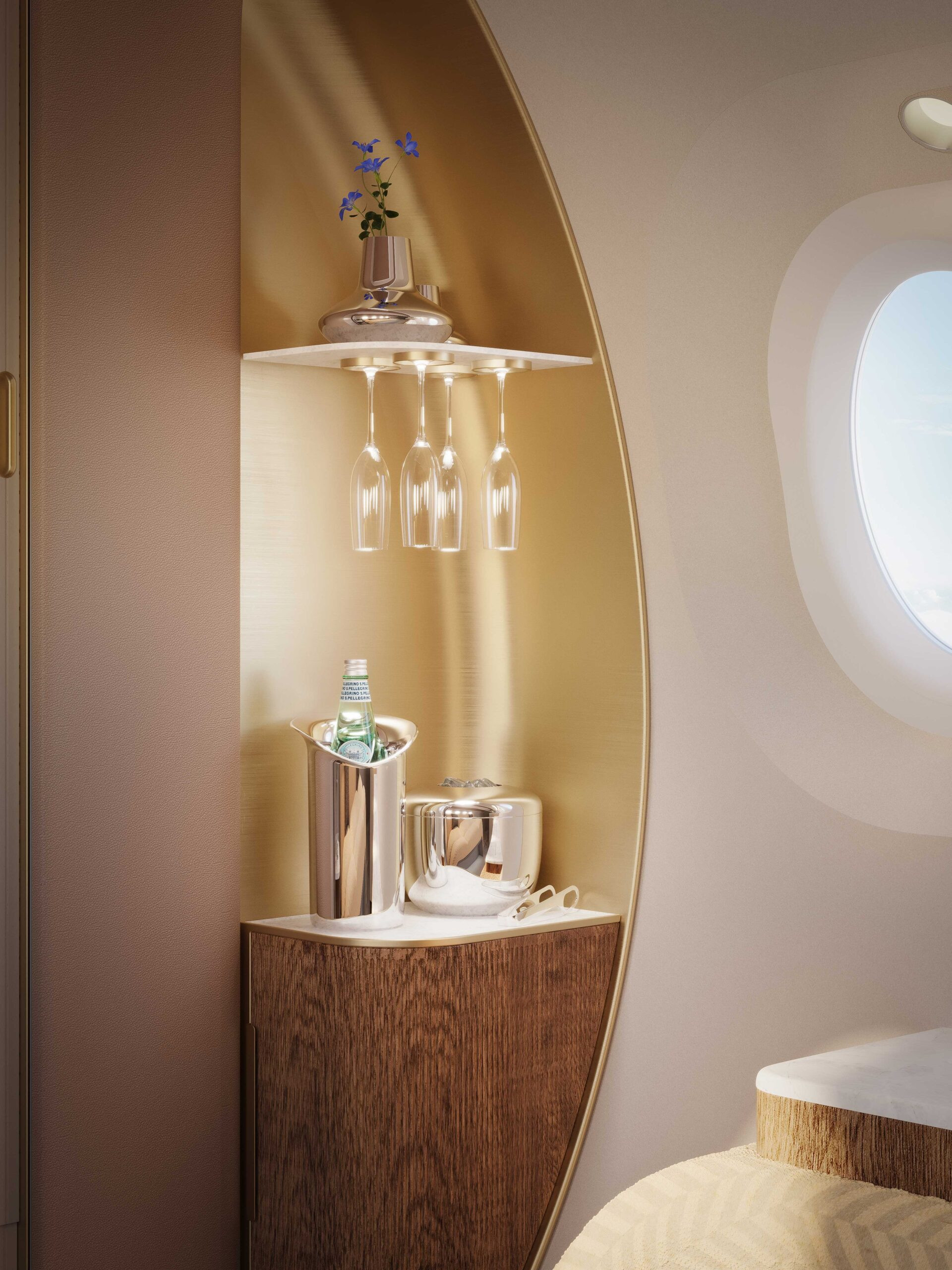
The Afterglow concept by JPA Design
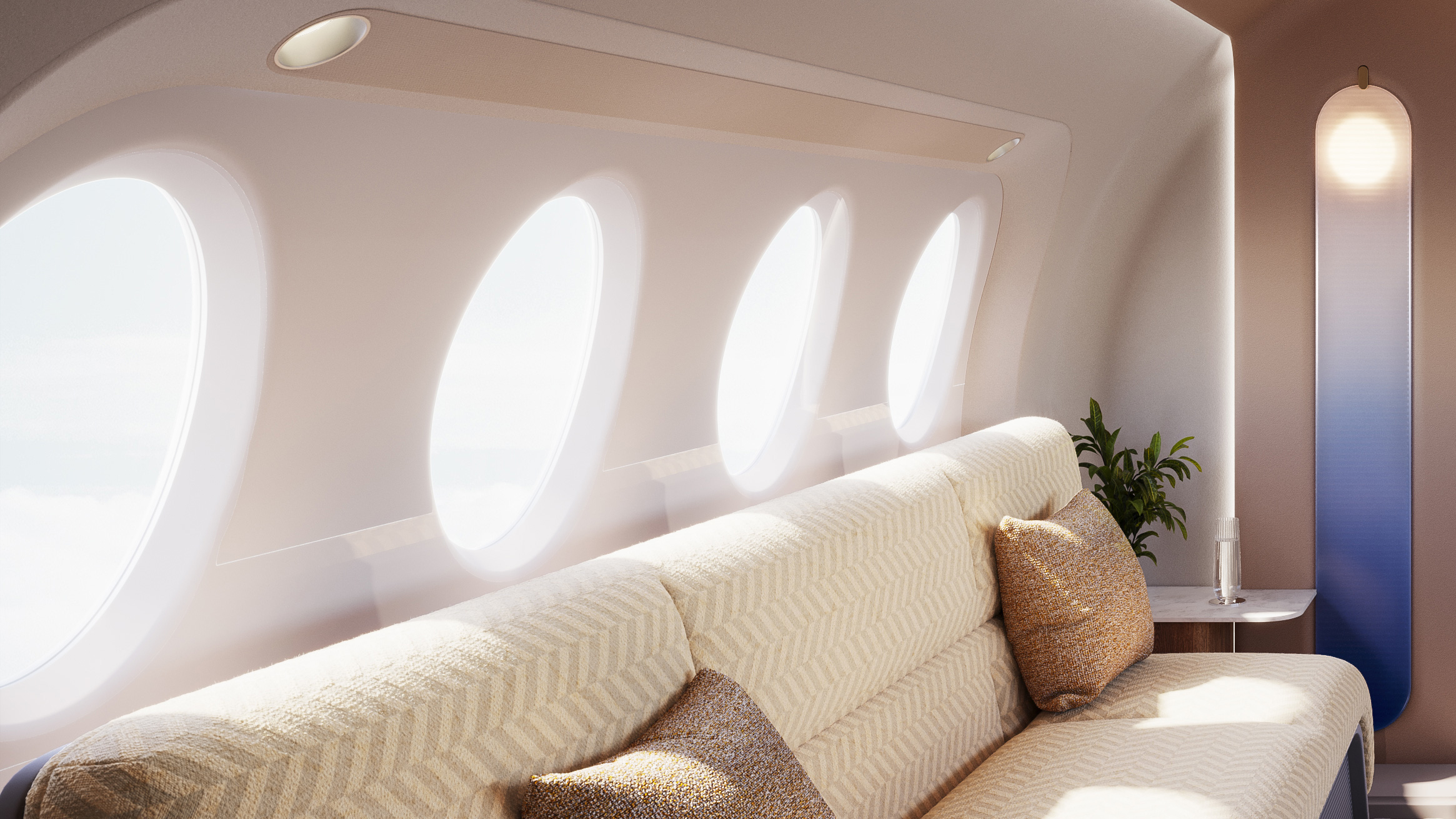
The Afterglow concept's fabrics and furnishings are low-key and muted
Jonathan Bell has written for Wallpaper* magazine since 1999, covering everything from architecture and transport design to books, tech and graphic design. He is now the magazine’s Transport and Technology Editor. Jonathan has written and edited 15 books, including Concept Car Design, 21st Century House, and The New Modern House. He is also the host of Wallpaper’s first podcast.
-
 All-In is the Paris-based label making full-force fashion for main character dressing
All-In is the Paris-based label making full-force fashion for main character dressingPart of our monthly Uprising series, Wallpaper* meets Benjamin Barron and Bror August Vestbø of All-In, the LVMH Prize-nominated label which bases its collections on a riotous cast of characters – real and imagined
By Orla Brennan
-
 Maserati joins forces with Giorgetti for a turbo-charged relationship
Maserati joins forces with Giorgetti for a turbo-charged relationshipAnnouncing their marriage during Milan Design Week, the brands unveiled a collection, a car and a long term commitment
By Hugo Macdonald
-
 Through an innovative new training program, Poltrona Frau aims to safeguard Italian craft
Through an innovative new training program, Poltrona Frau aims to safeguard Italian craftThe heritage furniture manufacturer is training a new generation of leather artisans
By Cristina Kiran Piotti